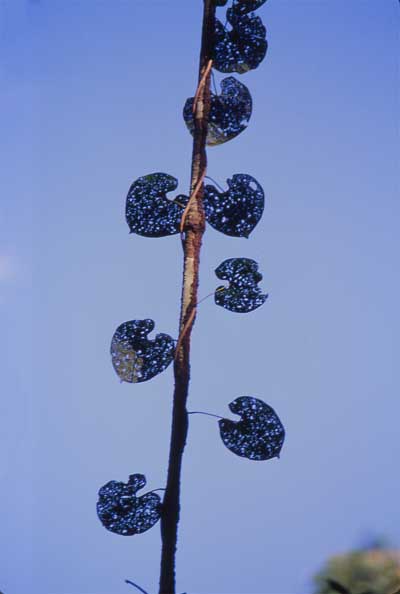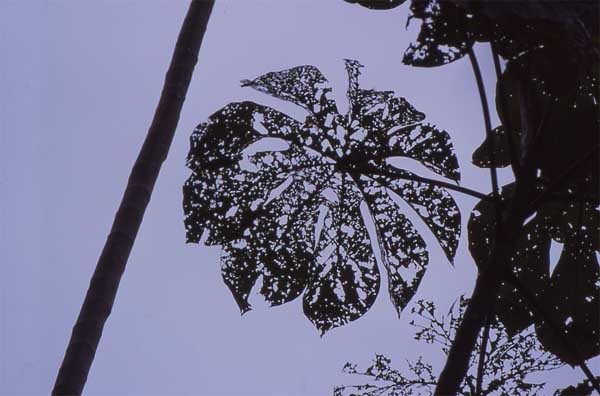INSECT HERBIVORY
Most rainforest insects eat plants (they are herbivores), although a mosquito-bitten tourist might think otherwise! This ecological pressure is one of the main driving forces behind the evolution of plant diversity. Plants produce toxins to inhibit insect herbivory, and in turn insects evolve ways to overcome the plant defenses. Sometimes, the plants just lose out, as shown in these pictures. Such plants will produce fewer fruits than better-protected individuals and will be less likely to pass on their genes to the next generation. |
Click below to see the photos and information on the herbivory:
eaten vine leaves
eaten cercropia leaf
EATEN VINE LEAVES
return to gallery
These leaves belong to a type of vine (Philodendron?) that was winding its stem around another climber. It's hard to say what kind of insect was responsible, but it may have been a type of caterpillar. |
EATEN CERCROPIA LEAF
return to gallery
Cercropia is one of the commonest Amazon trees, occuring in extensive stands mainly along river edges. They are pioneer plants that quickly colonize mud banks recently deposited by rivers. Cercropia lacks high levels of toxins that protect many other plants, and instead relies for defense on ants. In the example above, this strategy obviously failed—and the culprit has evidently overcome the vicious ants. (Compare this with an intact cercropia leaf.) |
Learn more about herbivory
previous photos
|
next photos
|
|---|




